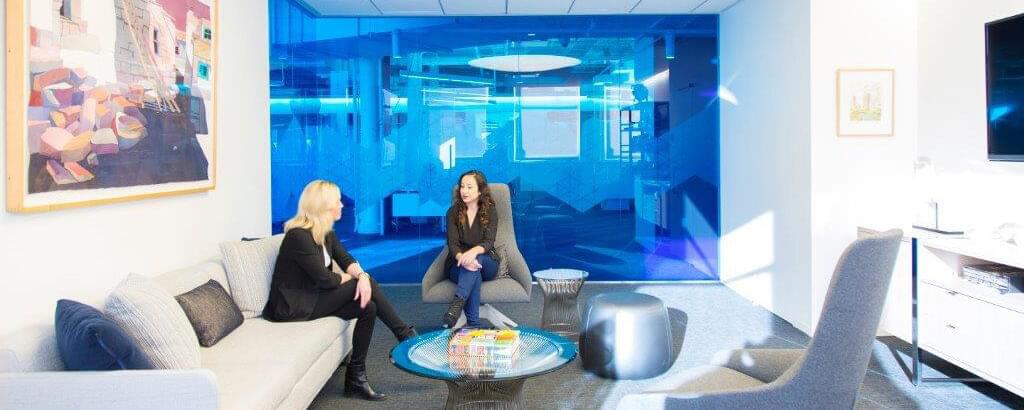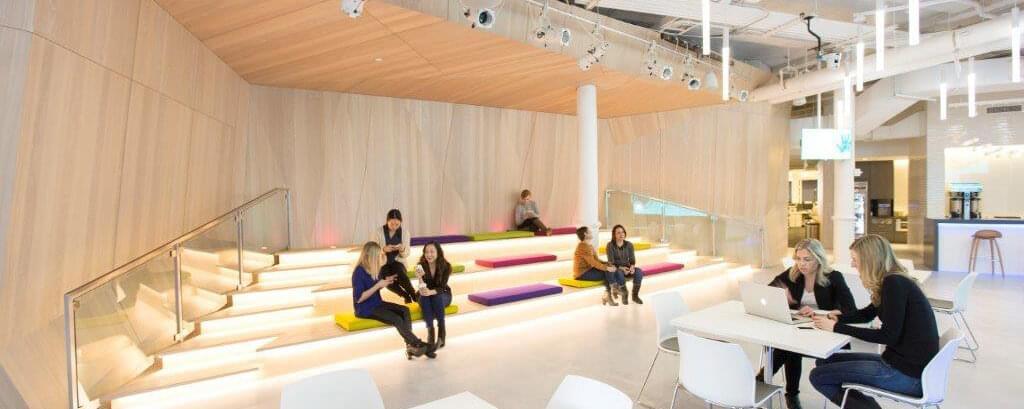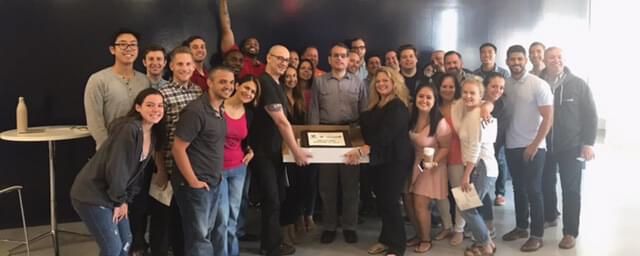
Mediaocean ramps up B2B self-service for 100K+ global users
Global ad tech company Mediaocean engages with Zendesk to drive a bold new B2B self-service strategy with custom, knowledge-based support. The company is partnering with clients to elevate its consultative support service for more strategic initiatives, while basic “how-to” questions are being deflected to robust self-service repositories. Next, Mediaocean’s Customer Success roadmap calls for messaging and AI to further bolster its targeted self-service strategy.

“We saw a greater ROI in Zendesk versus the other options. We did a cost analysis and showed how we were going to save money and increase productivity with Zendesk."
Stephanie Dorman
Chief Customer Officer 位於 Mediaocean
“Our internal team is working on building an AI tool into our applications and creating a connection to Zendesk through single sign-on. We’ll have the AI outside on our support sites and plugged into client products. That’s where the Zendesk content is really going to shine.”
Matt Barbarello
Senior Vice President of Knowledge Management 位於 Mediaocean
Company Headquarters
New York, New York
Annualized Ad Spend
$200B
Users
100K+
Company founded
2012
99%
CSAT
70%-75%
One business day resolution (chat)
60%
One business day resolution (all channels)
85%-89%
NPS (Client training)
In a sea of marketing channels, paid advertising remains a vital way for businesses to spread the word about new products and services. Mediaocean gives brands, agencies, and media sellers in 77 countries a powerful platform to manage and coordinate the entire workflow, from planning to payment, across traditional and digital ad spaces.
That breadth of reach—powering over $200 billion in media spend globally, serving more than 100,000 users—requires the company to have a strong customer service backbone.
“We produce enterprise-wide software that is comprehensive and intricate. Our support to B2B customers is high touch, and the questions can often be complex or take time to resolve,” says Matt Barbarello, Senior Vice President of Knowledge Management at Mediaocean. “The CS organization has always been a center of knowledge and expertise, working hand in hand with the product teams to solve issues. They pride themselves on being efficient and effective, with high NPS and CSAT.”
Expert global support from seasoned agents
Support agents must understand clients’ specific needs across more than 9,000 support tickets each month, 57 percent of which are submitted by chat and 40 percent by email. To meet this volume, a distributed team of 175 customer service specialists provide cross-platform and technical support 24 hours a day, 5 days a week, from offices spread across Asia, Europe, and North America.
Getting new hires up to speed on Mediaocean products takes time. By investing in agent training, the company has created a highly stable, experienced set of support teams with an average tenure of seven years.
At the heart of Mediaocean customer service, two primary groups leverage Zendesk for B2B support: Ad Infra, with more than 240 Zendesk licenses, and Ad Tech. Additional Zendesk instances are also used internally by the HR, IT, and Operations/Facilities teams.

Robust custom help centers for clients and employees
To serve its global customers, Mediaocean has developed eight custom help centers using Zendesk. The company has different products in the different regions, so knowledge base articles are translated into Chinese, Dutch, German, French, and French Canadian, based on the client location. There are currently 10,000 articles on the U.S. site alone, and 300 to 400 PDFs on an Apache server that is linked to Zendesk.
Since upgrading to the Zendesk Suite and Agent Workspace in 2023, members of the Mediaocean CS team have become power users of Guide.
“The Guide Enterprise was a huge hit with the content developers and technical writers that create articles and instructional resources for all the help centers globally. We’ve become more efficient on the content side and seen some real gains with the Zendesk Suite,” says Barbarello.
On the client side, Mediaocean built out videos, product installation instructions, technical requirements, and FAQs for availability in Zendesk. Users can even create a customized playlist of short e-learning videos, which can be emailed to anyone in the organization. It’s an especially popular feature among clients onboarding new users.
Internally, support agents can find answers and build their own knowledge base for agent training. The company offers single sign-on between Zendesk and its learning management system (LMS), which has longer form content and learning paths between two to five hours.

Evolving B2B experiences through self-service
While expert, consultative support has been a fundamental part of the organization, Mediaocean has shifted focus in 2024 and started using Zendesk to evolve the CS teams and drive more strategic, self-service initiatives.
“We’re not going to answer basic how-to questions any longer, which constitute between 60 to 70 percent of incoming support volume,” Barbarello explains. “We’re going to redirect people to the help centers, which will free up CS team members so they can help clients in more meaningful ways.”
The company aims to have robust self-service tools in place to resolve these types of how-to questions. Mediaocean empowers the world’s leading advertisers, agencies, and media owners, so they are working hand-in-hand with their clients to educate and enable them on the new strategy. The CS team is developing client-specific learning paths and help center content that will only be visible to certain clients.
“We’re aiming to foster local areas of expertise within the client organizations to increase deflection,” notes Barbarello. The response has been positive so far, with an average 85 to 89 NPS score for client training.
Greater ROI in Zendesk
Mediaocean’s partnership with Zendesk has been evolving since 2012, when CS teams were tasked with rolling out a single customer service solution that was affordable and easy to implement.
Mediaocean’s Chief Customer Officer Stephanie Dorman recalls how the Zendesk platform stood out by offering a clean user interface and higher efficiencies. “We saw a greater ROI in Zendesk versus the other options. We did a cost analysis and showed how we were going to save money and increase productivity with Zendesk.”
Mediaocean teamed with Zendesk professional services to ensure a successful deployment and launch, but the company soon faced a new obstacle on its CS roadmap.

CX challenges with Salesforce
Mediaocean was acquired and given a mandate to move from Zendesk to Salesforce. During that implementation, Dorman observed, “The other system had some strengths, but it was still complicated and incredibly expensive. Every time we turned around, there was another unanticipated customization or charge,” such as hiring a dedicated administrator to manage the tool full-time.
Meanwhile, case collision issues were reducing agent productivity and the average number of tickets closed per day per agent was declining. Mediaocean also saw a 75 percent drop in Web portal usage that first quarter, while support calls increased because clients couldn’t find the answers they needed.
After analyzing feedback from agents and clients, Dorman’s team found that 90 percent of its customer service needs were available out of the box in Zendesk, without costly or time-consuming configuration.
Despite having two years left on its Salesforce contract and significant money invested, Mediaocean decided to pivot. After a seamless migration back to Zendesk, teams were up and running on the platform in just two months.
.
Cost-saving integrations
Starting fresh with Zendesk in 2017 – supported on the AWS platform – allowed Mediaocean to improve its previous configuration and develop an even stronger partnership with Zendesk. The team built a complex integration with JIRA. Mediaocean also connected Zendesk to its Salesforce CRM, using Workato’s integration tool.
“The Salesforce integration provides great value and saves on licensing costs. Being able to seamlessly push customer data to Zendesk enables support teams to access it efficiently, while maintaining a system of truth,” says John Tieu, Information Architect at Mediaocean.
Integrating SnapEngage for chat and switching from DialPad to Zendesk Talk has enabled Mediaocean to provide an omnichannel customer experience.
Today, the company’s CS agents resolve up to 75 percent of chats and 60 percent of support requests across channels within one business day. Tracking tickets and managing client SLAs is also much easier, using CloudSET from the Zendesk Apps Marketplace.

Easier onboarding and reporting
Tieu has become a “Zendesk fan” since helping Mediaocean with the migration back to Zendesk. “Zendesk is so intuitive. I can get new hires up to speed with an hour of training, whereas other tools are much more nuanced,” he says. “On the admin side, Zendesk is also easy to set up and manage. We can still get as complex as we need with any custom codes or custom objects.”
Having user-friendly tools goes a long way toward creating happier agents and a positive onboarding experience. In fact, Mediaocean is currently developing new reporting capabilities through Zendesk, so they can report on activities in the LMS and on live training initiatives.
“Our customers have saved a lot of time using client-facing dashboards in Zendesk,” reports Tieu. “Now, we can provide our clients with automated reports and high-level CS metrics, such as trending volume, open tickets, critical tickets, and CSAT.”

Powering self-service with AI
Next, Mediaocean plans to launch a community feature and start embedding artificial intelligence to drive more deflection through self-service. The team is looking into Zendesk messaging, as well as assessing providers for an AI agent, which can configure FAQs and recommend articles based on each search.
“We’d like to have an AI solution rolled out by the end of the year,” says Tieu. “Once we’ve updated our help center articles, we’d love to use AI to free up team bandwidth so they can focus on strategic initiatives.”
Barbarello sees one final challenge to increasing efficiency this year. “Our internal team is working on building an AI tool into our applications and creating a connection to Zendesk through single sign-on. We’ll have the AI outside on our support sites and plugged into client products. That’s where the Zendesk content is really going to shine.”
